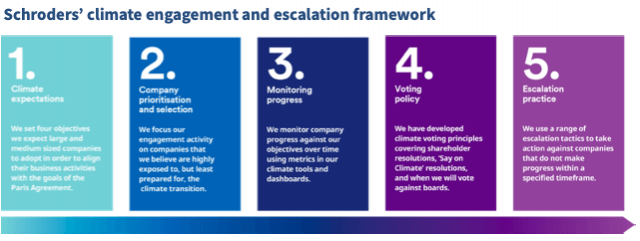This article is from the latest Good Investment Review, from Good With Money and Square Mile Research, which focusses on the issue of greenwash.
The way in which we invest not only shapes the financial returns we achieve for our clients but also the type of impact that their investment portfolios may have on society and the environment.
The relationship between financial and non-financial factors has rapidly evolved and we see a fundamental shift in how companies are viewed and valued. Understanding the impact that they have on people and planet is crucial in determining their true costs and ultimately the impact-adjusted profits they generate.
Impact is the third pillar of investing
There is more than just the relationship between risk and return. A third dimension – impact – must, in our view, be embedded into a holistic investment process. Only by considering these three pillars together can we understand an asset’s real investment potential and achieve the best outcomes for our clients.
ESG (environmental, social and governance) integration is rapidly becoming a baseline expectation for the investment industry. ESG integration means that fund managers and analysts systematically and explicitly consider ESG factors alongside or within traditional financial analysis. It means a broader assessment of the world in which we operate: one which captures sustainability risks and opportunities in our investment decision-making.
ESG integration
At the end of 2020, Schroders achieved our goal of becoming a fully ESG-integrated firm. Integration will look different through the lenses of different asset classes, but we believe it is imperative to have a robust framework that allows for consistency where possible across the fundamental elements of how we assess investment opportunities. But importantly, the landscape is evolving, and we need to ensure that the depth of our ESG integration is keeping pace with the growing expectations of our clients.
Schroders’ Sustainability Accreditation Framework was launched in 2017 and last year, we further embedded the concept and practices associated with ESG integration across asset classes and regions. This meant supporting investment teams in deepening the way they integrate ESG.
For example, we encouraged investment teams to fully utilise and broaden their usage of the proprietary ESG models and tools we have developed. How this looks specifically for the 60+ investment teams across Schroders, each with their own investment philosophy and approach, differs. What matters is a consistent level of ESG capability and application of the ESG resources the Sustainable Investment team has to offer.
2022 will see the launch of Integration 2.0, the next iteration of our ESG integration process. This will see the firm raising the level of what best practice in integration looks like and what we will expect investment teams to demonstrate. We believe that we need to continuously challenge ourselves on what constitutes best practice as we strive to maintain our leadership position in the market and continue to meet the needs of our clients.
Active ownership
Crucially, sustainable investment is not just about making investment decisions, it is also about what we do after we have made them. This year, we have begun to formalise the requirements of our approach to active ownership, as well as the expectations arising from our Climate Transition Action Plan into the Sustainability Accreditation Framework.
In both cases, we will introduce more tightly defined criteria for what investment teams will need to do and evidence in order to maintain their ‘ESG integrated’ status, which is reviewed annually by the Sustainable Investment team.
Schroders has a long history of active ownership, spanning over 21 years. In 2022, we published our Engagement Blueprint, which sets out the long-term outcomes we desire to see from companies in each of the thematic areas. The document aims to bring transparency to our investee companies and our clients, whilst also giving our internal investment teams guidance for their engagements on the most material issues.
We recognise that effective engagement requires continuous monitoring and ongoing dialogue. Where we have engaged repeatedly and seen no meaningful progress, we will escalate our concerns. Decisions on whether and how to escalate are based on the materiality of each issue, its urgency, the extent of our concern and whether the company has demonstrated progress through previous engagements
The possible actions we may take to escalate an engagement are outlined in the Engagement Blueprint.
Climate engagement
Climate engagement is a core part of our active ownership strategy. Engaging and working with companies to transition their business models to decarbonise in line with a net zero or 1.5°C pathway is an important step in supporting those businesses to adapt and thrive. Our climate engagement and escalation framework sets out how we will use our influence as investors to help drive the transition to a low carbon economy.

ESG integration and active ownership are core parts of a robust sustainable investment strategy. It is no longer enough to just consider ESG factors on an ad hoc basis, we believe they must be systematically integrated through a robust framework that allows for consistency across investment strategies. We also believe the same formality and rigour should apply to active ownership and it is through continuous monitoring and dialogue that we can encourage companies towards a more sustainable future.
To read our latest sustainability insights click here and visit schroders.com to find our more about our sustainable investment funds.
Risk warning: The Good Investment Review provides general information only. It is not financial advice. If you invest in any of the products mentioned in the review, you do so at your own risk. This is not a recommendation to buy or sell any funds mentioned or engage in investment activity with any particular fund manager. Capital is at risk and past performance is not a guide to future performance.



